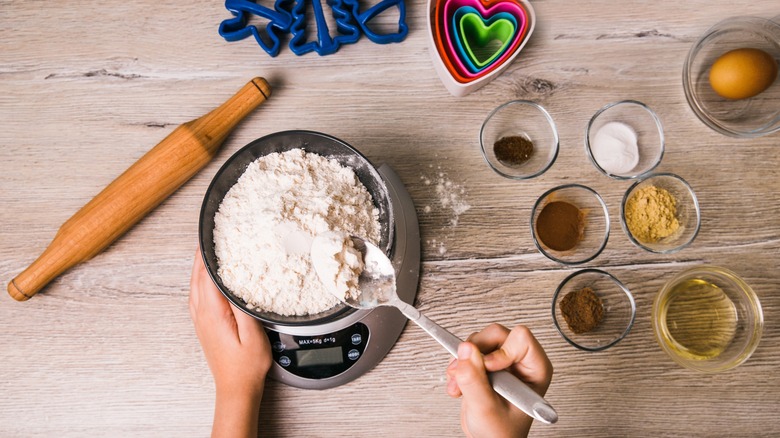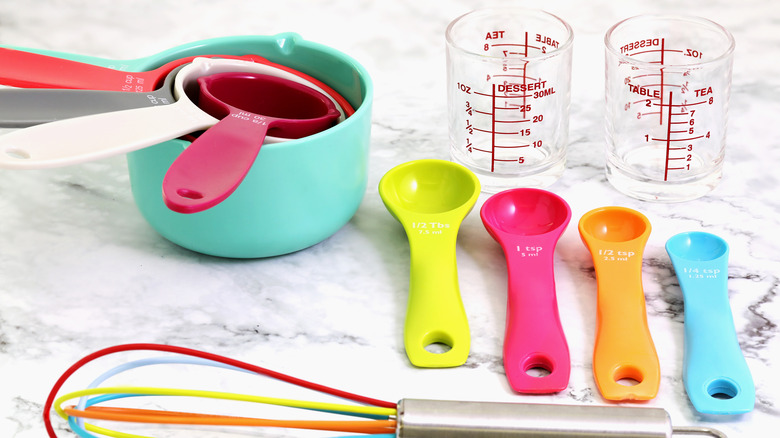What's The Difference Between Fluid Ounces And Ounces?
Nothing yucks your yum more than a baking failure. Professional bakers can't stress enough the importance of proper measuring. Unlike other forms of cooking, baking is a science. It requires exact measurements to achieve the desired outcome.
Some baking mistakes aren't apparent until your first bite. A dense, saw-dust-like cake is often the result of too much flour in the recipe. Home cooks have used the dip, scoop, and level-off technique for generations. Although simple, this technique can produce up to 20% more flour than you intended, per King Arthur Baking (KAB). A simple, inexpensive way to prevent this is to use a kitchen scale to measure ingredients. This will produce consistent results. Good recipes will provide the weight of ingredients in the recipe.
Using a scale has several benefits. It's easier to divide or multiply the recipe using a scale. No more odd measurements when you want to make a smaller portion. When making individual baked goods — like cookies and cupcakes — or dividing cake batter between tins, weighing each portion assures each item cooks at the same rate. The best benefit, however, is less cleanup — no need for different measuring cups and spoons. Instead, use a single utensil to spoon ingredients onto the scale and save time by washing less (via KAB).
Home cooks probably notice that recipes that provide weight use ounces for liquid and dry ingredients. Although both measurements involve food, fluid ounces and ounces are different.
Fluid ounces vs. ounces
One fluid ounce and one ounce of a dry ingredient are not the same, explains The Kitchn. As the name implies, a fluid ounce is used when measuring liquids. Fluid ounces measure the volume of the ingredient, not its weight. Since liquids vary by weight per fluid ounce, making that distinction is essential. A fluid ounce of water and a fluid ounce of olive oil does not weigh the same.
A fluid ounce is abbreviated as "fl. oz." in recipes. To correctly measure a fluid ounce using a scale, set the digital scale to fluid ounces. If that's not possible, use a liquid measuring cup to easily see the line marking the proper measurement. Keep in mind that some liquid measuring cups are not very accurate, says KAB.
Ounces are a unit of weight used when measuring dry ingredients, although more viscous liquids like honey and yogurt are sometimes measured in ounces. Ounces are abbreviated in recipes using "oz." If you don't have a scale, KAB describes a more accurate way to measure flour using measuring cups. Since flour compacts as it sits in the canister, start by fluffing it up with a whisk or using a measuring cup to aerate the flour. Spoon flour into the proper measuring cup until it is over the fill line, using a straight edge to remove the excess.
Understanding this difference and correctly measuring ingredients helps ensure your cakes, cookies, and everything else comes out delicious.

